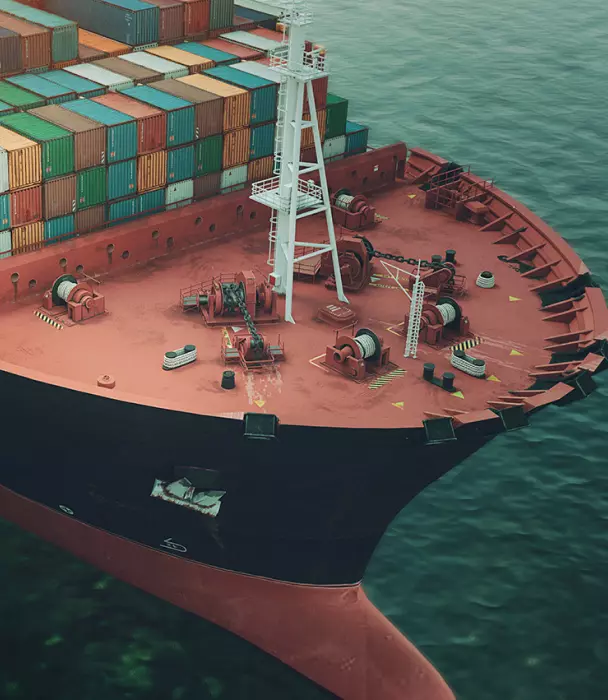The global freight industry is a cornerstone of international trade, yet it is also a significant contributor to carbon emissions. From the fuel used to transport goods to the packaging waste generated, there are numerous areas where environmental impact can be reduced. As environmental regulations tighten and customers become increasingly eco-conscious, sustainable freight forwarding is no longer a choice- it’s a necessity. How green is your approach to freight forwarding? Here are some ways to make your logistics operations more sustainable:
Assessing Your Current Sustainability Practices
Before improving sustainability, it’s essential to evaluate where your company stands. Consider the following:
-
Are you optimizing routes to minimize fuel consumption?
-
Do you prioritize carriers with eco-friendly initiatives?
-
Is your packaging designed to reduce waste and emissions?
-
Are you leveraging digital tools to cut paper usage and streamline operations?
Key Strategies for Greener Freight Forwarding
1. Optimize Transportation Efficiency
> Select efficient routing and transport mode to reduce carbon footprints.
> Consider shifting to multimodal transport solutions, which combine road, rail, sea, and air freight to balance efficiency with sustainability.
> Prioritize carriers who use fuel-efficient vehicles and optimize routes to minimize fuel consumption.
> Consider offsetting carbon emissions through initiatives like tree planting or investing in renewable energy projects.
Tip: All Forward’s digital platform helps forwarders compare carrier options, allowing them to offer and to choose more sustainable routes and transport modes
2. Reduce Empty Miles
> One of the biggest challenges in freight forwarding is the number of empty or underutilized shipments. Collaborating with a network of forwarders, like All Forward’s global platform, enables you to:
> Find partners for backhauls, reducing empty truck movements and overall fuel consumption.
> Utilize freight consolidation, where multiple shipments share space in the same container or truck, maximizing efficiency.
> Leverage dynamic routing to match available capacity with demand, minimizing empty trips.
3. Prioritize Eco-Friendly Packaging
> Reduce, Reuse, Recycle: Encourage the use of reusable packaging materials and promote recycling initiatives.
> Sustainable Packaging Materials: Opt for eco-friendly packaging materials made from recycled or biodegradable materials. This helps lower emissions related to transportation weight and volume.
> Packaging Optimization: Minimize packaging waste by using the right amount of packaging for the goods being transported.
4. Leverage Digital Freight Management
> Going paperless is a small but impactful step toward sustainability. Digital freight management systems can help by:
> Reducing reliance on printed documents and unnecessary paperwork through electronic Bills of Lading (eB/Ls).
> Enabling real-time shipment tracking, reducing manual data entry and improving efficiency.
> Utilizing automated invoicing and digital reporting, cutting down on paper waste.
Tip: All Forward’s digital platform provides end-to-end freight management solutions, enabling you to streamline operations, enhance efficiency, and significantly reduce paper usage across you entire supply chain.
5. Work with Sustainable Partners
> Aligning with environmentally responsible carriers and suppliers is key to a greener supply chain. Consider:
> Prioritizing carriers that use low-emission vehicles, alternative fuels, and green technology.
> Partnering with providers that implement carbon offset programs and track their environmental impact.
Tip: All Forward’s freight forwarders network enables members to connect with partners who share a commitment to sustainability, ensuring that every link in your supply chain is environmentally responsible.
6. Warehousing
> Energy Efficiency: Implement energy-efficient practices in warehouses, such as using LED lighting, motion sensors, and optimized temperature control systems to reduce energy use.
> Waste Reduction: Establish recycling programs and implement a zero-waste policy to minimize landfill contributions.
> Sustainable Building Practices: Consider green building certifications (e.g., LEED) when constructing or retrofitting warehouses.
7. Supply Chain Management
> Visibility and Collaboration: Improve real-time tracking and enhance supply chain transparency to optimize routes and reduce inefficiencies.
> Strategic Partnerships: Work with suppliers and customers who are committed to environmental responsibility and can align with your sustainability goals.
> Technology Adoption: Utilize technology to track shipments, identify inefficiencies, monitor fuel consumption, and optimize routes.
8. Monitor and Offset Carbon Emissions
> Tracking and reducing emissions is essential for long-term sustainability. Steps to consider:
> Invest in carbon offset programs that support reforestation, renewable energy, or carbon capture projects.
> Monitor fuel efficiency by utilizing telematics systems to track real-time fuel consumption and optimize vehicle performance.
> Analyze carbon footprints through digital reporting tools that help companies measure emissions per shipment.
Future-Proof Your Business with Sustainable Practices
Sustainability in freight forwarding is no longer optional - it’s a competitive advantage. A greener approach is not only good for the environment but also beneficial for business. By adopting sustainable practices, you can:
>> Enhance your brand image and appeal to eco-conscious customers.
>> Reduce operational costs by optimizing fuel efficiency and minimizing waste.
>> Gain a competitive edge as sustainability becomes a key differentiator in the industry.
By joining All Forward’s global freight forwarders network, you can enhance efficiency, reduce emissions, and collaborate with like-minded professionals committed to a greener future. Start today- because a sustainable supply chain benefits everyone.


